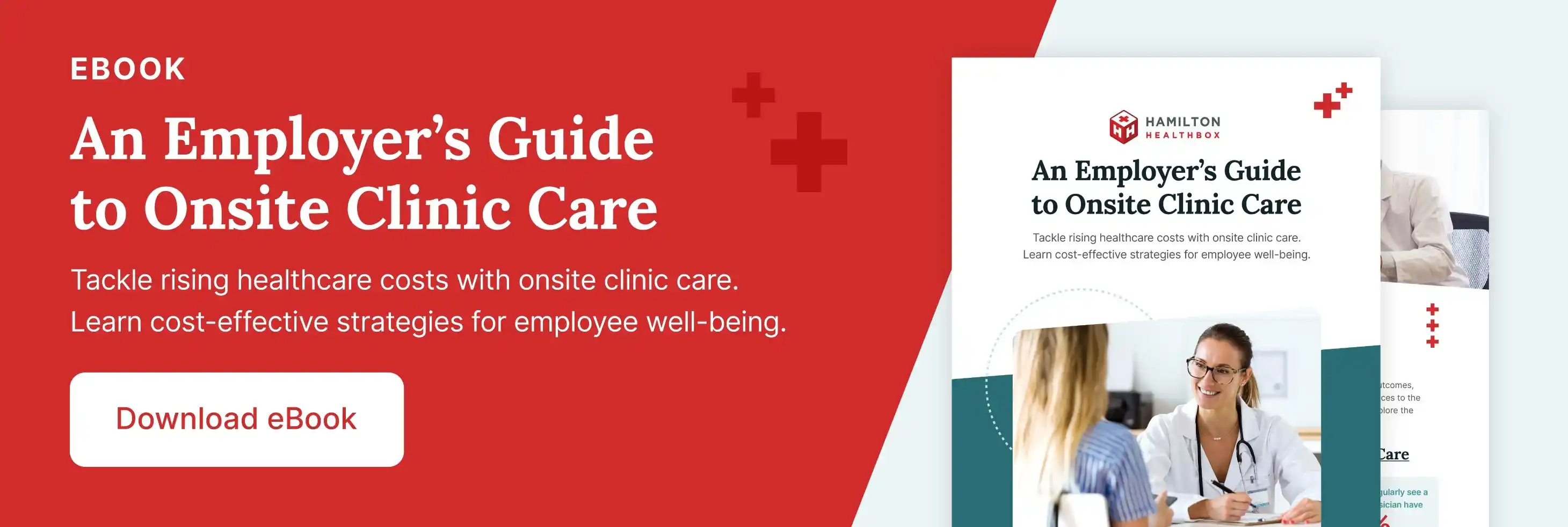
Businesses that provide employee health benefits are always looking for ways to manage workers’ health better and reduce total costs of care. Research has shown that an effective way to do that is to make greater use of primary care and chronic care services. Both are associated with improving employee health and reducing hospitalizations and emergency room visits. For businesses that provide employer-sponsored health plans, particularly with self-funded structures, supporting employee health at the primary care level is especially critical, as total costs of care lower over time and become more predictable. Let’s look at why that is and how employers can achieve their health and cost goals.
Role of Self-Funded Employer-Sponsored Health Plans
Self-funded employer-sponsored health plans are exactly what they sound like: Employers assume the financial risk associated with providing healthcare benefits to their employees. The employer sets aside money each month to cover employees’ expected physician and hospital bills. At the end of the year, the money accumulated is weighed against claims paid out, and the difference becomes either savings that are retained by the employer or an additional expense to cover the overage. (Potential loss is often limited. Employers in self-funded plans typically hold stop-loss insurance, a type of insurance that protects them from liability for catastrophic or unpredictable losses).
Benefits of self-funded plans are often in tax benefits, customization of service offerings, and, of course, opportunities for financial gain associated with healthy employees.
In 2020, more than 50% of companies with between 200 and 999 employees were self-funding their group health insurance. When it comes to self-funding, larger companies tend to have consistent cash flows, which makes it easier to assume the risk of paying its employees’ claims. Furthermore, bigger firms can spread the risk across a larger number of workers. Even so, smaller companies—those with fewer than 25 employees —are being offered opportunities to self-fund their insurance.
Employers can process workers’ claims themselves, or they can outsource to third-party administrators (TPA). Most TPAs offer additional services, such as contracting with the physician network to perform functions related to administering and operating a health plan.
Enrollment in self-funded employer-sponsored health plans appears to be on the rise. According to the results of a 2022 KFF employer health benefits survey, 65 percent of covered workers surveyed were enrolled in employer self-funded health plans, which is 5 percent higher than in 2012. Is self-funding the right choice for your organization? Let’s look at the pros and cons to help you decide.
The Pros and Cons of Self-Funded Employer-Sponsored Health Plans
As businesses look for ways to control costs while providing high-quality health benefits, many are pursuing employer-sponsored health plans as a way to achieve their goals. Weighing the advantages and disadvantages of such plans is an important step in the decision-making process.
The pros of self-funded plans include the following:
- Self-funded plans offer more flexibility than traditional plans. Employers can tailor benefits to the specific needs of their workers rather than take the uniform approach that fully funded plans provide. This also means that employers can contract with providers or networks that best meet the healthcare needs of their employees.
- Self-funding can have cost benefits. As noted by the Healthcare Administrators Association, employers are not subject to state health insurance premium taxes, which are typically 2 to 3 percent of the premium's dollar value. There also can be benefit since employers only pay for the healthcare their employees use. That said, total profit or loss will depend on the health of the population covered as well as terms of any stop-loss coverage as noted above.
- Self-funded plans give employers control over health plan reserves. Rather than insurance carriers investing the dollars collected from employee premiums, employers can maximize their own interest income.
- Self-funding allows employers to retain any unused funds that have been set aside for insurance claims. Some businesses choose to use that money, for example, to help fund capital investments, while others may roll it over into the fund for next year’s claims.
Although self-funding offers many important advantages, it may only be right for some organizations. For example:
- Employer-sponsored health plans carry risk. Unexpected, catastrophic claims can strain a business’s cash flow. This unpredictability requires companies to be prepared for costs to fluctuate annually. To achieve the cost-savings potential of self-funding, employers should explore stop-loss coverage to limit liability and commit to self-insuring for a minimum of 5 years.
Increasing the Success of Self-Funded Plans with Onsite Care
When employees don’t use primary and chronic care services, they often need to take more time off work and incur higher medical expenses for health conditions that could have been either prevented or treated in less intensive settings than an emergency room or hospital. The result is not only damaging to an employee’s health, but it can also become extremely costly for companies with self-funded health plans. To improve access to and use of primary and chronic care services, companies that offer self-funded health benefits are turning to employer health solutions such as onsite clinics.
What do onsite clinics look like? They can vary greatly depending on the organization’s worksite medical needs. For example, the care setting could be a nearby storefront, a mobile unit, or a meeting room staffed by a medical professional. The National Business Group on Health (NBGH) notes that the convenience of onsite care can improve employees' use of preventive screenings, immunizations, lab work, and services they might not otherwise receive. As a result, workers are less likely to become ill, miss work, or make others sick at work. Onsite medical services can also improve productivity because workers will spend less time away from their jobs to travel to their doctors.
By providing healthcare services in the workplace, employers offering self-funded health benefits may see lowered and more predictable total costs of care. Not all onsite clinics work the same way. Organizations such as Healthbox™ provide onsite primary care services and additional services, such as imaging and lab work. Such support has helped Hamilton Health clients achieve the following:
- $132 decrease in Per Member Per Month (PMPM) total spend
- 3.5 times ROI within six months of onsite care use
- 37% increase in preventative physicals
- 43% drop in ER and urgent care visits
- 46% increase in primary care visits
Onsite healthcare amenities also help companies stand out as an employer of choice, which can improve talent recruitment and retention.
Tips for Success When Pursuing Onsite Care
If you’re considering onsite care to support your employer-sponsored health plan, keep the following in mind:
Seek Customization
Hamilton Health avoids a cookie-cutter worksite medical approach. Companies can determine the right service mix for their employee population, including storefront clinics to mobile units serving satellite offices. The service mix is also tailored to a company’s needs, including primary care, urgent care, lab services, imaging, and mental health services. Because of this flexible approach, employers can access the right level of care in the most cost-effective way.
Pursue a Mix of Onsite Care Backed by Telehealth
The most successful onsite care programs meet employees' communication preferences, whether they prefer to meet physically onsite or after-hours with telehealth access. Telehealth-only plans tend to suffer poor utilization and patient satisfaction while offering a hybrid approach best ensures employees will make use of care services and important follow-ups.
Prioritize Data
A strong determinant of success is an onsite care provider’s willingness to share data and have your company’s actual data drive decisions. With Healthbox™, ongoing reporting ensures you always know what’s driving your company’s healthcare spend and can adjust program dynamics over time as you learn more insights. Regular stakeholder summits keep your decision-makers updated on the progress and in the know. Having this evidence backing your employer health solution enables you to tailor education and services so your employee health can continue to improve over time.
Discover a Program That Will Work Best for Your Employees
Learn more about onsite care options for your employees on our Employer's page. Healthbox™ staff can recommend onsite care approaches to best meet your needs and walk through a custom cost-benefit calculation based on the characteristics of your employee population.


